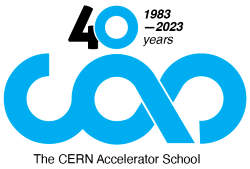Speaker
Description
The measurement of radio-frequency (RF) signals and the characterization of RF components, systems and subsystems used in particle accelerators is based on particular measurement instruments, like the RF vector network analyzer (VNA) and the spectrum analyzer (SA), but also on general-purpose instruments, like the oscilloscope and others. Before going into some details of SAs and VNAs, the concept of travelling waves in transmission lines is explained, along with their characteristics and the definition of the complex reflection coefficient. The Smith chart is introduced as a visualization tool, combining the complex impedance or admittance plane with the complex reflection coefficient in an elegant way. Some background on network theory is given to introduce the scattering (S)-parameters, again with a few examples. A few examples of measuring the characteristics of a simple cylindrical ("pillbox") resonator, i.e., resonance frequency, loaded and unloaded Q-value, and the R/Q geometric factor based on the perturbation bead-pull method, are covered. The last example explains the measurement of the longitudinal beam-coupling impedance of a vacuum device using the S21 stretched-wire method. Many other RF measurements were given in the practical hands-on afternoon sessions, like the characterization of travelling wave accelerator structures, noise figure measurements, characterization of non-linear devices (e.g., 1dB compression point, IP3 of RF amplifiers), AM and FM modulation, material characterization with resonators and waveguides, LLRF feedback systems, etc. could not be covered in this brief introduction.
